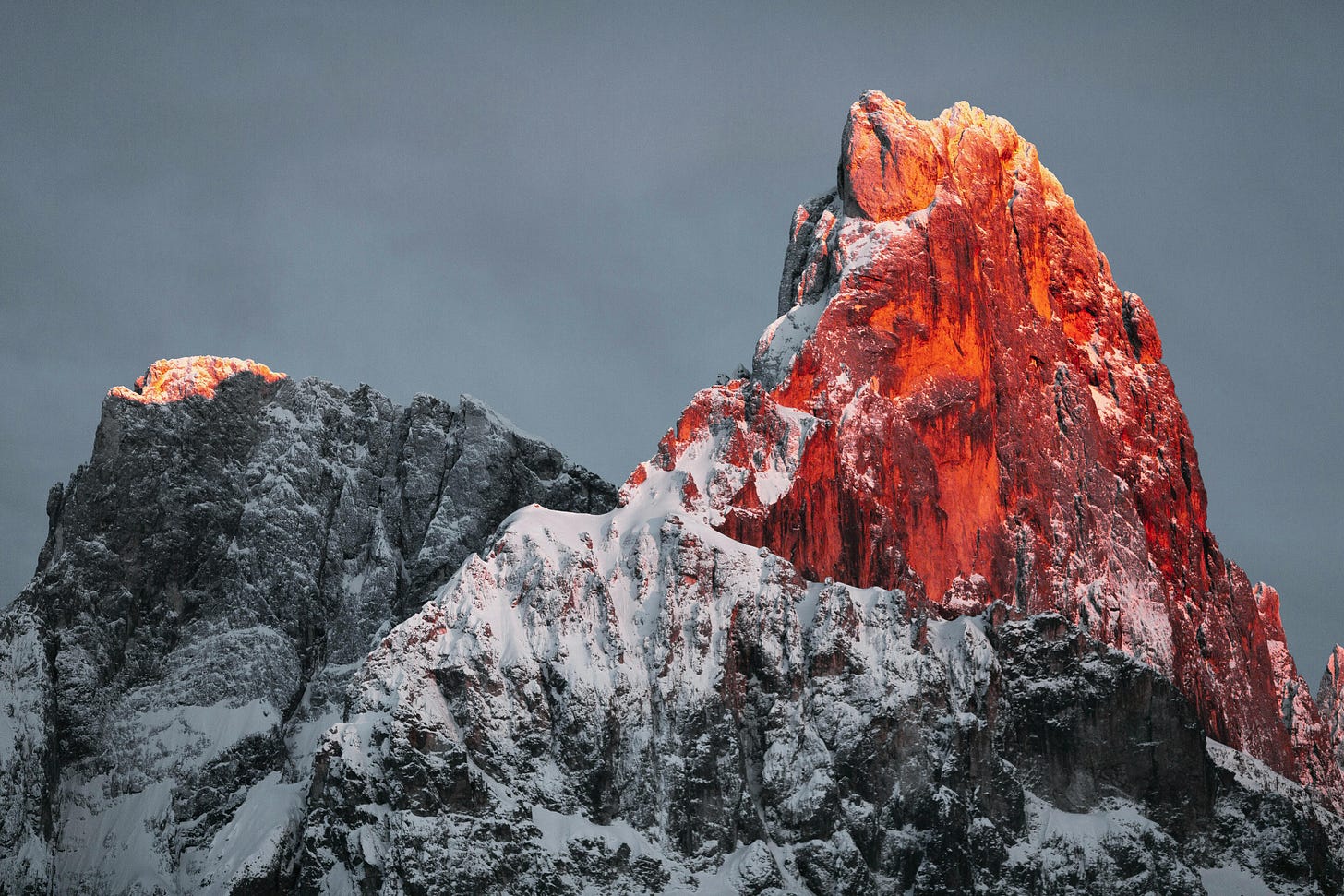A reflection on the mystery of the Transfiguration of Christ (Luke 9.28-36)
Religion is often perceived as a road-sign barking orders at people, telling us how to live our lives. True Christianity, if I am so bold, is a gateway to adventure, to unseen worlds, to the hidden world beyond our physical world. Bear Grylls, the former Scout-in-Chief, describes this as the greatest adventure of all.
How do you describe this indescribable journey? Like Raphael’s masterpiece of the Transfiguration, we use symbols, stories and imagery to paint a picture of a world beyond our senses. This symbolic landscape invites us to take a closer look. It creates a gateway for us to walk through if we are bold enough, and to be changed by that journey.
It shouldn’t surprise us to find the Gospel of Luke’s rendition of The Transfiguration full of symbolism and imagery. Mountains become sacred places—fingers of stone reaching towards the heavens. Consider the words of our psalm, its words climbing like morning mist ascending those sacred slopes:
“I lift up my eyes to the mountains — where does my help come from? My help comes from the Lord, the Maker of heaven and earth.” (Psalm 100.1-2)
“The maker of heaven and earth”. These ancient peaks stand as nature's cathedrals, their spires piercing the veil between worlds, their silence speaking louder than any sermon.
But what compels us to climb these spiritual slopes? What draws prophets to high places? It is the journey to see the mountain behind the mountain, the river beyond the river, the smiling face behind the universe. When we go on pilgrimage, visiting high places and sacred spaces, the journey humbles the mind and the ego. In doing so, we might develop a heightened sense of consciousness or awareness. It is the experience of seeing spiritual things in the very ordinary. It is the discovery that the spiritual reality is greater than the physical reality.
Does this mean that the physical world doesn’t matter? Of course not. The most mystical people become this world’s greatest guardians. Consider the words of Martin Luther King: “I’ve been to the mountain top … I’ve seen the Promised Land. I might not get there with you. But I want to let you know that we will get to the Promised Land.” Martin Luther King was a prophet of his time. And boy, do we need prophets in our times too.
This is the spiritual pull of the mountain. It compels people to ascend its heights to dream into reality a better world for us all. Perhaps this is the same force that pulled three disciples up a mountain to witness Jesus’ glory being unveiled—that ancient hunger to touch the hem of heaven.
The Transfiguration stands as one of Christianity's most dazzling mysteries, a moment when the curtain between worlds turned to gossamer. Imagine: drowsy disciples, their eyes heavy with ordinary sleep, suddenly thrust into the extraordinary. Jesus, their dusty-robed teacher, metamorphosised. Without ceasing to be what he was, he became something more. He revealed a new depth to his existence - as the Son of God. His face became the sun, his garments a dazzling white. In the classical world, and in contemporary washing powder adverts, the colour white symbolises beauty and purity - in this case, the sublime beauty of heaven itself. He was still the same - a man of flesh and blood - but had become something more. This is an invitation offered to us all to become something more than what we are. It reminds us of another oft-quoted saying: “For thou hast made him a little lower than the angels, And hast crowned him with glory and honour” (Psalm 8.5). This is the recovery of our spiritual identity, reminding us of the dignity that God bestows upon all humanity.
Moses and Elijah, those titans of faith, stepped through time's thin membrane to stand beside Jesus as if the past and present were merely different rooms in God's great house.
How would you react if you had such an experience? Consider Peter, wonderfully human Peter, confronted with glory too bright to comprehend. What does he do? He offers to build tents and pop-up shrines, as if divine revelation could be contained under canvas. We might chuckle at his response, yet don't we do the same? Would we try to capture the infinite within finite frames, or to hold the eternal within our hands?
There is another side to mysticism. It isn’t impersonal, like laws of nature or The Force. The disciples heard a voice coming from the cloud: “This is my Son, whom I have chosen; listen to him.” Mystics speak of hearing a voice at a deeply personal level. The spiritual realm isn’t vague; it is contact with a person, God, who speaks to the heart. Anything else is a distraction from receiving God’s love for us.
The mystery of mysticism isn't that it's rare—it's that it's everywhere, waiting to be seen. Like morning dew catching the first light, every ordinary moment holds the potential for revelation. The sacred doesn't just dwell in cathedral spires or mountain peaks; it shimmers in the air around us, vibrating in the spaces between each one of us.
We live in an age that claims to have outgrown mystery, yet mystical experiences flood through the cracks in our certainty like light through stained glass. We glimpse it in sudden and unexpected moments: when music breaks open our hearts, when love overwhelms our defences when silence speaks in words of peace and reassurance. These aren't hallucinations or emotions gone wild—they're moments when the world's mask slips, revealing the heavens around, above and beyond us all.
Think of reality as a vast ocean. Our daily life skims the surface, like a pebble skipping across a pond. Mystical experiences are like sudden plunges into the cold depths, where light bends differently and familiar shapes transform. Down there, everything ordinary becomes extraordinary, not by changing, but by being seen as it is.
You don't need to scale Everest or dive to the bottom of the Marina Trench to find God. The path towards mysticism might lead you to fields or hills, where afternoon light turns grass to gold. It might find you in a walking group, where shared footsteps become a pilgrimage. Or perhaps it waits in a prayer time, where silence opens like a flower, petal by petal, revealing the presence of God.
For we are not, as they say, a secular people. We are mystics in waiting, pilgrims in disguise, each secretly yearning for a heavenly moment, for a bit of adventure.
God isn't out of touch. Instead, you could say he’s hiding in plain sight, waiting just beyond the thin veil of our busyness, rationality, and fears. He is waiting for us, eager to be found.
So let us become like children again, let’s humble our minds, wide-eyed before mystery. Let us seek the mountain behind the mountain, the river beyond the river, the smiling face behind the Universe. For the mountain is always calling, and its heights hold more than stone and sky—they hold the possibility of transformation, the promise of transfiguration, and the hope of seeing the world with eyes made new.







